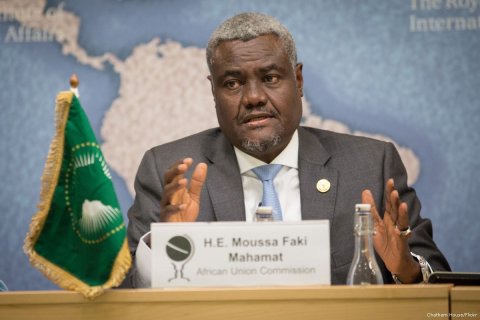COVID-19, LMICs and the importance of collective preparedness

On 31st December 2019 the WHO office in China received a report of 29 pneumonia cases of unknown aetiology in Wuhan city in Hubei province, central China. Within one week it became clear that the initial cases were associated with a seafood market where live poultry and wild animals were also sold. The virus was quickly identified as a novel beta-coronavirus and the genetic sequence was shared on 12th January. The infection is now officially termed COVID-19 and the virus SARS-CoV2.
Within less than a month, it had spread throughout China, and to neighbouring countries, the USA and Europe. It became clear that the new virus was highly transmissible from person to person, though with less than 20% of cases being classified as severe. It has the clinical features of an atypical pneumonia and is more often severe in those with co-morbidities and the elderly. Since there are no specific therapies or vaccines available, standard public health measures appropriate for a virus spread by droplet, close contact and on environmental surfaces were instituted. On 30th January WHO declared the outbreak a Public Health Emergency of International Concern, their highest level of severity, when there were almost 10 000 confirmed cases, over 200 deaths, and it had spread to 20 countries.
By the second week of March, there had been over 110,000 cases confirmed worldwide with over 3,800 deaths. The main battle to control this epidemic has been in China, however, the rest of the world needs to maintain high vigilance as this virus is highly transmissible and can cause severe disease and death, as has been seen in countries such as South Korea, Iran and Italy. Now, more new cases are being seen outside China than within, on the 8th March there were 3,610 new confirmed cases outside of China compared to 46 within. Containment through case finding and isolation, and contact tracing remains the key public health approach to controlling the epidemic in all parts of the world. This is particularly important for countries in sub-Saharan Africa, and also those parts of South and Central America and Asia that are not as well prepared for outbreaks.
Response in low- and middle-income countries

Of the 45 low-income countries that have undertaken a national preparedness assessment, none have been deemed as ready to respond, making them particularly vulnerable to outbreaks. There are many reasons for this, including worse health and nutrition, exacerbated by high rates of concomitant HIV and tuberculosis, and low influenza vaccination rates; poor quality of healthcare and resource constraints: low- and middle-income country (LMIC) governments spend on average only $267 annually per person on health; vulnerable supply chains and medicine procurement are weak, and up to 30% of medicines are substandard or falsified.
In response to the outbreak, the African Union Commission is strengthening partnerships and coordination across the continent, including a common approach for monitoring and movement restriction of people at risk for COVID-19 and for information sharing.
The WHO regional office for Africa, in partnership with Africa CDC and others, is working to prepare African countries for the potential spread of the virus through the Africa Taskforce for Coronavirus (AFCOR). This includes developing and implementing national preparedness plans, event- and case-based surveillance systems, point of entry controls, traveller screening and contact tracing, developing policies for mass gatherings, risk communication, and the handling and management of suspect cases. Plans are being developed for the sourcing and stockpiling of personal protective equipment (PPE) and quality-assured diagnostics.
Collective preparedness
Research priorities for Covid-19 include the development of point of care diagnostics, optimising personal protective equipment (PPE) and determining the utility of facemasks. Identification of the animal reservoir to prevent further spill over, accelerating the evaluation of therapeutics – especially of remdesivir and Kaleetra, for which trials are currently underway, and vaccines - which may prove vital in the longer term. These priorities require commitments of increased funding. Other priorities include the promotion of the rapid sharing of information, clinical samples and genetic sequences, social science research to ensure communities engage and support proposed interventions, working to counter misinformation, rumour and myth, natural history studies including the documentation of virus shedding, and working to close or make safe animal wet markets.
The threat posed by COVID-19 has cast a spotlight on the shortcomings of health systems in LMICs. Countries must invest in emergency preparedness. One longer term solution might be to establish a Global Health Security Fund that provides incentives for countries to make capital investments to close their preparedness gap. There are some preparedness efforts paying off in anticipation of Covid-19 including in the area of Ebola. WHO has also developed a national influenza network of laboratories and health facilities, which have scaled up their diagnostic capacity quickly.
Ministries of health, national public health institutes, universities, and other public health agencies, are working in many ways to fight this new public health threat across the globe. But this epidemic is not only a medical emergency and human tragedy, it is starting to affect economic activities, and without urgent action the socio-economic effects could have wide implications for trade, travel, provision of aid, economic markets, supply chains and the daily lives of people living around the world.